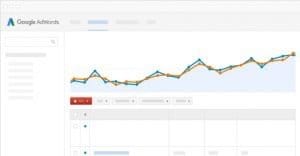How to Drive More Traffic from Your LinkedIn Posts

LinkedIn is a bit of a mess. It’s a social network ostensibly for professional networking, job-oriented connection building and B2B communication. The problem is, none of that is really necessary. Job applications come primarily through online systems with HR managers checking Facebook before LinkedIn. B2B networking is often much more direct. It has a role in small business, and it has a role for entrepreneurs, but it’s still less focused and less effective than it can be.
Bearing that in mind, if you’re going to use LinkedIn to funnel traffic to your site, you need to make sure to use it as effectively as possible. Here are some tips.
1: Fill Out Your Profile Properly
Your profile is the public face you show for your users, whether you’re a business or a personal user. As such, it needs to be robust.
If you’re a business, you need to have a professional yet personal profile, heavily focused around your cover photo. It’s a lot like the top banner on Facebook, but more pronounced, with the “profile picture” logo floating above it. Of course, make sure your body copy is optimized and casual as well.
If you’re a personal user, you need to fill out everything you can. The more robust a profile is, the more personal touches there are. People tend to empathize better with people who have profiles that look lived-in.
In both cases, you should have links to your website wherever necessary. You can link to specific landing pages in these sections, but typically your homepage is the better option.
2: Join Groups
You can and should join as many groups as possible, but only if those groups meet a set of extremely intense criteria. See, anyone can make a group on LinkedIn, and that means there are thousands of groups with low membership, low activity or low relevance to your networking. You need to find groups that are:
- Full of active users, particularly users who run influential websites in your industry.
- Within your areas of expertise.
- Active. It’s nice to find a group with 1,200 people, but if only three of them ever post, it’s not worth your time.
You can find these groups by making use of some of your website keyword research. Plug in keywords and industry buzzwords into the search bar for groups. You’ll be presented with a long list of results, which you can filter down. Look for groups labeled active or very active, look for groups with a high number of members and look for groups with influential connections.
When you find an appealing group, browse through it for a while and see if the sort of posts and atmosphere is something you can utilize. Additionally, make sure there aren’t rules in the group against posting links. Your whole purpose is to become an influential member to drive traffic to your links, after all.
3: Build More Connections
Through your groups, through your networking and through external sources, build up more first-degree connections. More people seeing your content directly means more people who can see – and share – your links. For ideas where to look for people, go beyond LinkedIn’s email imports.
- Past and present co-workers
- Past and present classmates
- People who you recognize and respect from the groups you join
- People recommended by your existing contacts
- People you’ve met offline and exchange information with
- People you’ve connected with on other social networks
4: Maintain Activity
LinkedIn isn’t as aggressive as Facebook at filtering out content from infrequent posters, but the site only works as long as you’re using it. This means a few things.
- Post status updates frequently. You don’t need to keep everyone updated every day, but a few times each week is a good goal.
- Post links to new blog content when you write and publish that content. Perhaps more importantly, embed these links in expanded posts about the same content. Write a couple of paragraphs about what’s in the blog post, to entice people to click through. People on LinkedIn react better to longer updates than blank links.
- Post frequently in your groups. You want to be a recognized name, and not because you’re always posting your own link. Post your own experience without links; people will click through to your profile and connect. If external resources are required for the discussion, post links, whether or not they’re to your own site. Mix your own site links in occasionally.
- Post links to important industry content and not just your own content. As with any network, these days it’s all about curation, not creation.
5: Engage On Content
With all of the content you’re posting, on your own feed and in your groups, people are going to start responding to you. Some will thank you for your comments, some will leave comments in return, and so forth. Remember, this is all about networking, even if you’re running a business profile rather than a personal profile. People expect relationships, not cold acknowledgement.
Engagement will come in two forms; directed to you, or coming from you. Engagement directed to you is all the people commenting on your posts and engaging you in discussion. Keep up the discussion and hold conversations whenever possible. This is best done in groups.
For engagement from you, you need to work on the other side of the coin as well. Rather than just waiting for engagement to come to you, you should go out and participate in other discussions and leave comments on other posts. As long as you’re interesting and engaged yourself, the networking cycle will be successful.
6: Seek Out Influencers
All of this will only take you so far. You need to, at some point, deliberately seek out influential members of your industry and network with them directly. In your groups, for example, you might find a membership of 1,000 but only 10 people are actually actively influential in your industry. Those people will be the center of your world.
You shouldn’t ignore the regular users, of course, but if you’re given the choice between engaging with an influencer or responding to a comment from someone with no site and no name, network with the influencer.

 ContentPowered.com
ContentPowered.com





Profitworks
says:Thanks James, I’ll give this a try. Are connections really the key here? What about buying connections? I can have 500+ for like $5 from Fiverr, etc.
Hi Profitworks — I think quality is key. Fake connections are just like fake followers/likes or fake links; they often cause more harm than good and aren’t organic or engaged. A fake connection isn’t going to click your links because there’s no person behind the keyboard; it was created by software. I hope this helps!